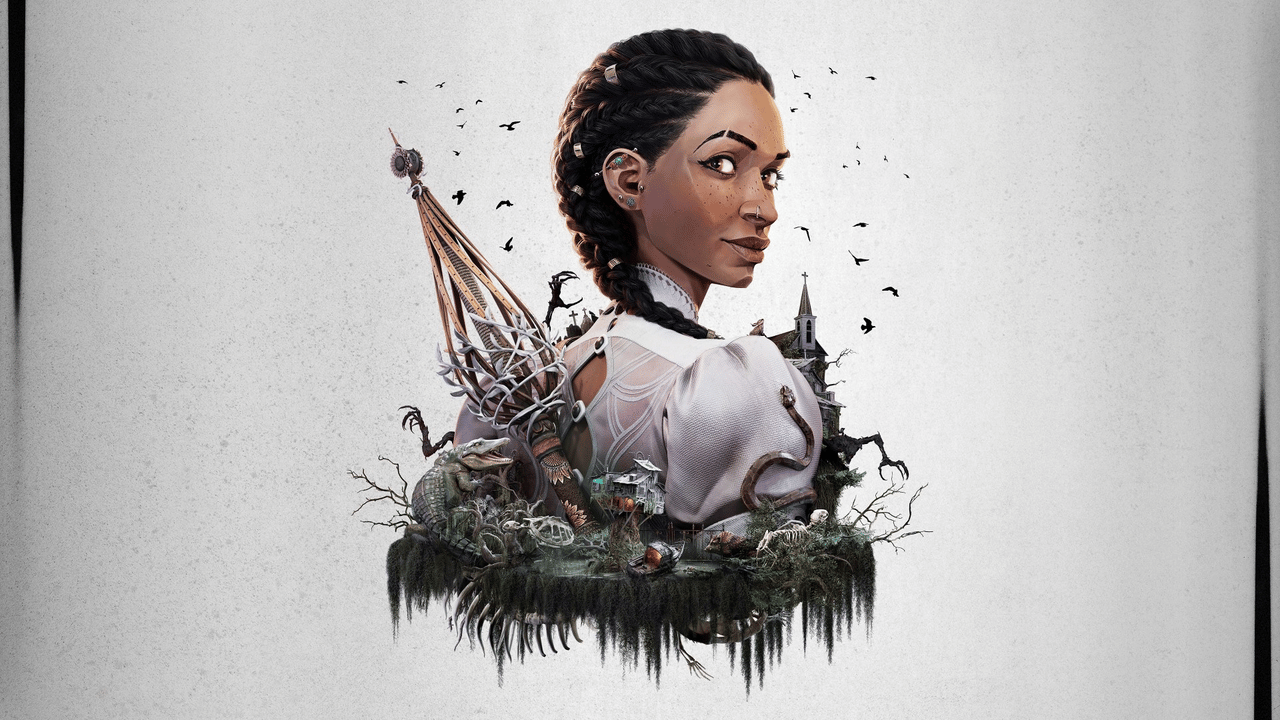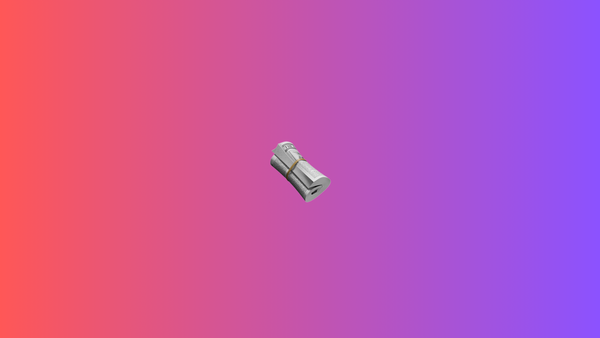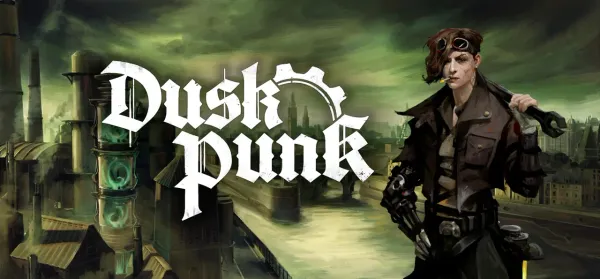South of Midnight is a confusing throwback with modern storytelling
South of Midnight is a confusing throwback with modern storytelling
After about an hour and a half of playing South of Midnight, Compulsion Games’ latest release, I almost abandoned the game for good. You play as Hazel, a just-out-of-high-school track runner helping her mom prepare their home for the impending hurricane. You argue and things go from bad to worse as your home is swept down the river by the storm. Over the next 45 minutes, you’ll play through the most PS1 3D platformer tutorial since Spyro the Dragon.
You’ve got a double jump, a glide, a power to make platforms appear, a push, a pull, wall-running, and you’ll shimmy along many a cliff’s edge. Interspersed between tutorial bits, you’ll either hear Hazel begin to break out of her incredibly naive teenage shell with some barn-burning insights like how her mom actually has an interior life, or fight waves of swirly smoke monsters by dodging around and mashing X. Based on this first hour and a half, South of Midnight would be one of the best games I played in 2002.
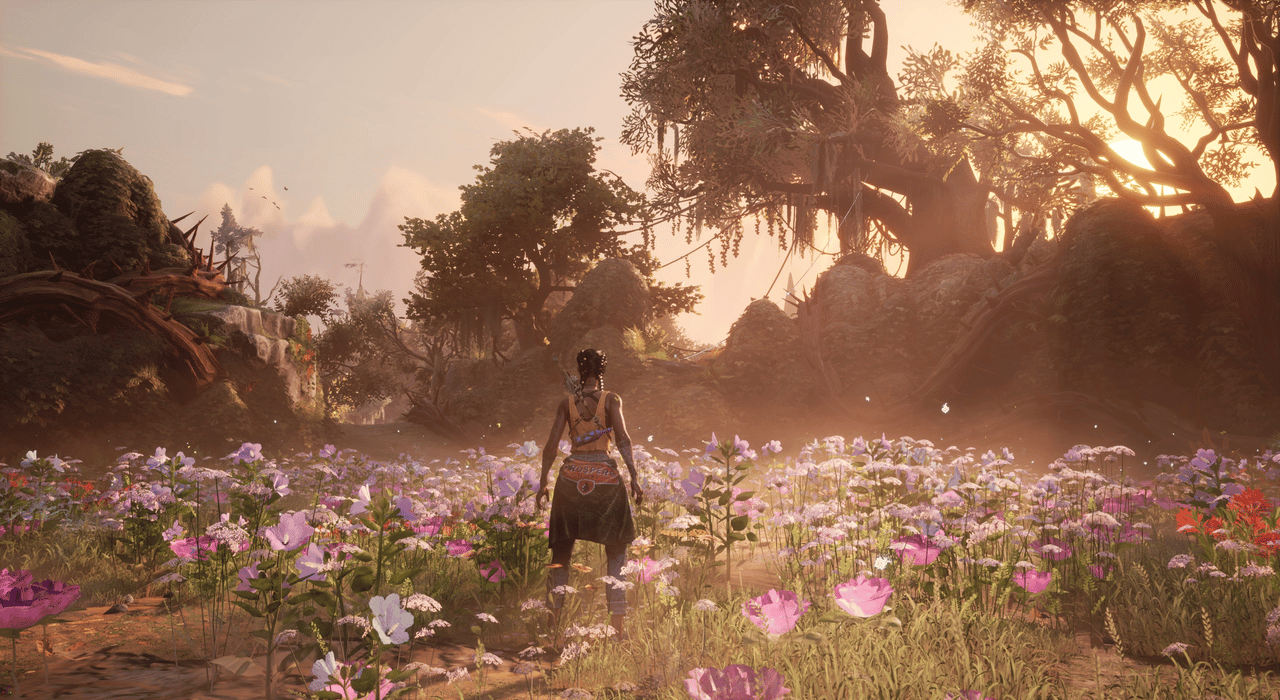
In a different era, I’d say that South of Midnight’s sequel will be an all-timer. The writing is excellent; the chapters are powerful, emotional stories you don’t typically expect from a game like this. The platforming sequences are almost universally competent with plenty of room to add difficulty and complexity in a future game. The toolset you have to zip around the world is pretty full-featured and puzzling out how to use them together to find collectibles is a great dopamine rush. The combat is a bit lackluster, but for the most part, the narrative woven into the boss battles make up for it.
Maybe in 2002, surrounded by Ratchet and Clank, Spyro, Banjo, or Jak and Daxter, South of Midnight would get another shot to be its best 3D platformer self. But not now. With a tightly written emotional core and a story dealing with intensely traumatic and societal issues, South of Midnight was shooting for Psychonauts and landed in Recore. Certainly not an awful place to be in my book, but it could’ve been so much more.
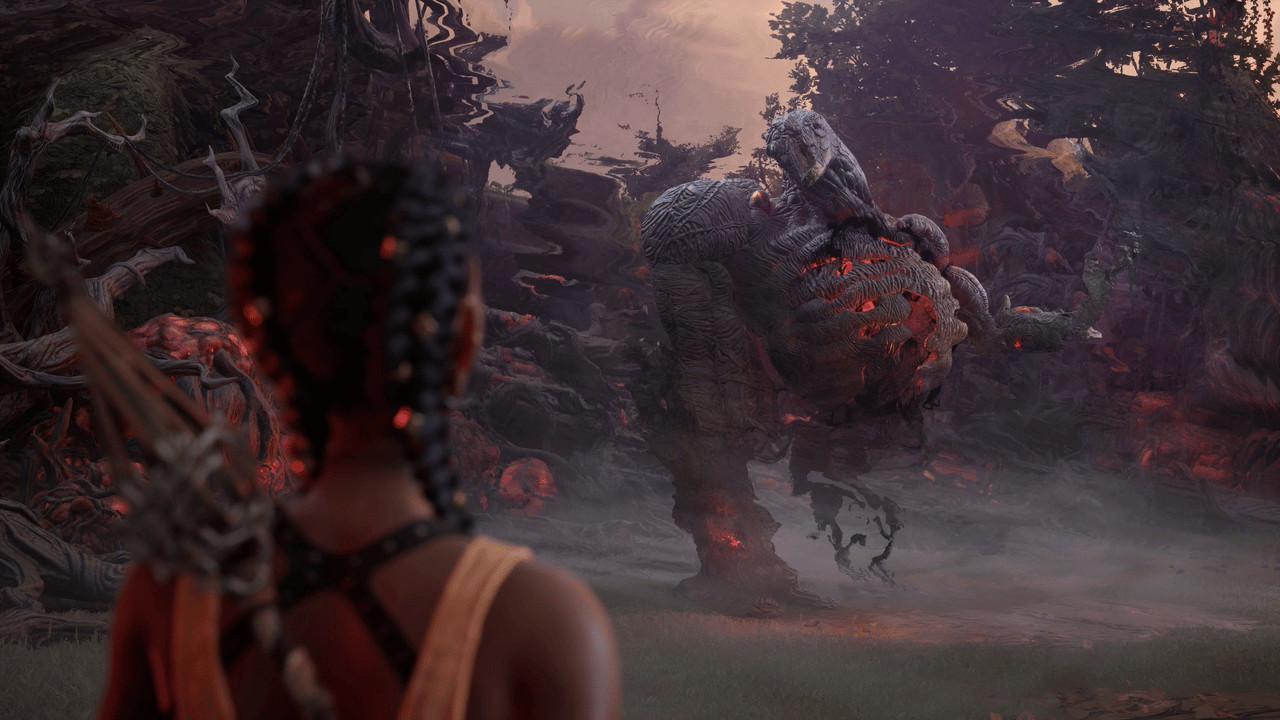
What holds South of Midnight back is the combat. I’ve gone on pretty extensively in Kindness and Violence, a recent video I made for the channel, but suffice it to say, the combat is bad. It’s flat, restricted to arena battles, and generally feels like a pre-Arkham game. Once you know the power of upgrading Batman to hit X+Y, there’s just no going back. Unfortunately, the combat in South of Midnight is primarily mashing X or using a push/pull/constrict power, then mashing X. Maybe on harder difficulties managing the five or six different enemy types would be more engaging, but I don’t see how. Each encounter is on a flat plane; there’s no verticality, almost no obstacles to avoid, and you’ll have pretty much every power in the game by the midway point. I suspect Compulsion knew the combat wasn’t hitting all the time, because there’s an accessibility option to allow you to skip it (which I did, from Chapter 8 onward).
The part of South of Midnight that really sings for me is the story. Or, more precisely, the story of the world. Hazel, a just-out-of-high-school track star, discovers she has Weaver abilities after a hurricane hits her hometown of Prospero and sweeps her home—mom included—down the river. Hazel’s story is simple: hard on her mom in the beginning of the story for being so focused on her job as a social worker, Hazel comes to acknowledge the stress of Lacey’s work, and she begins to break free from her stereotypical teenage self-centeredness. It’s nothing revolutionary, but on par with a Dreamworks movie. Which is only a good comparison point because the chapter vignettes leading up to the boss battles are Pixar-quality storytelling.
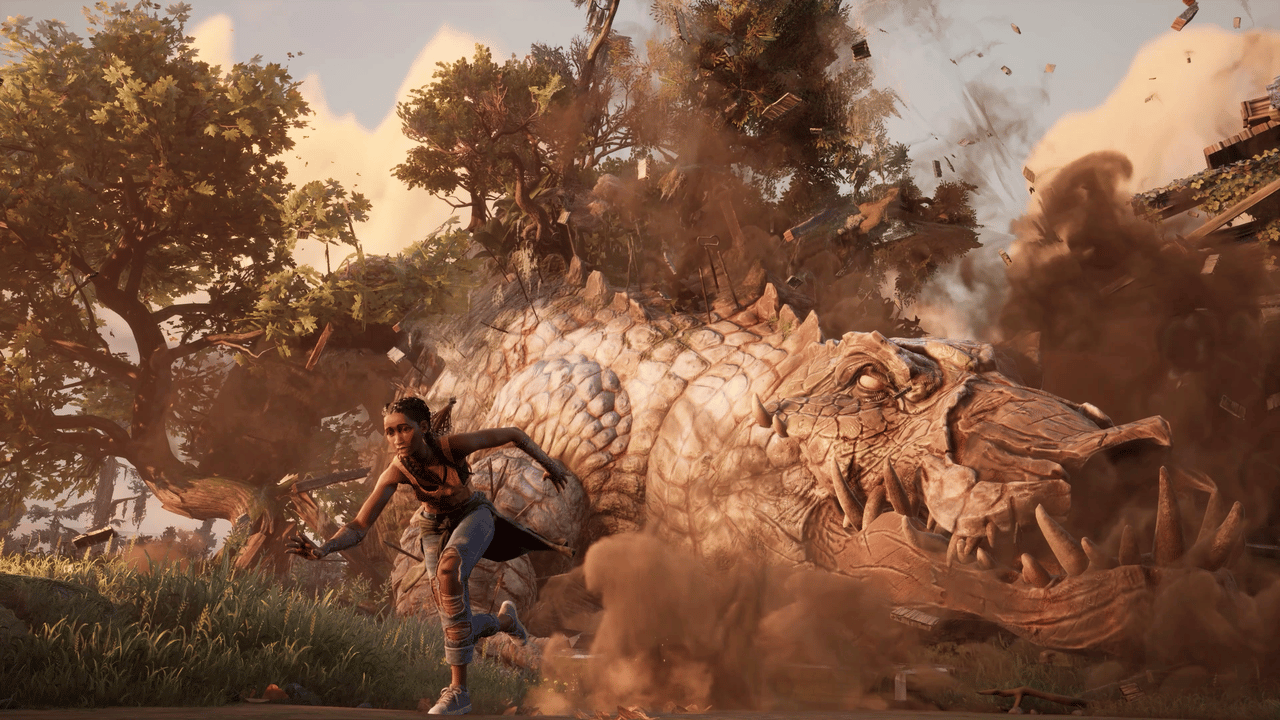
In South of Midnight, you’ll use your platforming skills to explore expansive levels, read notes in the environment, and complete arena battles. Most of the arena battles will reward you with bits of story that slowly reveal the life story of the boss you end up fighting at the end of the section. Collect all the story vignettes and a mysterious purple smoke monster chases you through the level in a timed platforming challenge that is often fun.
The bayou is not a kind place, and through each chapter, Hazel discovers the grim shades of humanity that created the mythical creatures she tries to heal. Whether it’s familial trauma, a bayou settlement littered with eviction notices, a town of factory workers that abused their children, or a hidden enclave of children, each location in South of Midnight is gorgeous and well-rounded. The locations you visit are bright and colorful, but hide a darkness that unravels as you progress through the levels.
Each of the main bosses have their own awful backstory, and these stories (and the subsequent boss battles) are the best bits of the game. The boss encounters are where the magical realism of the game—and the music, my god, the music!—soar. You’ll heal a massive tree in the shape of a boy, defeat a house-sized alligator, and battle a towering were-owl set to bespoke blues tracks that tug at your heartstrings. The story vignettes you find across the chapters are moments of pain from the perspective of the evildoer, but the boss battle music finally lets the bosses speak for themselves. You’ll hear Benjy’s story from his point of view, a wailing blues track perfectly timed to your climb up to Benjy’s face.
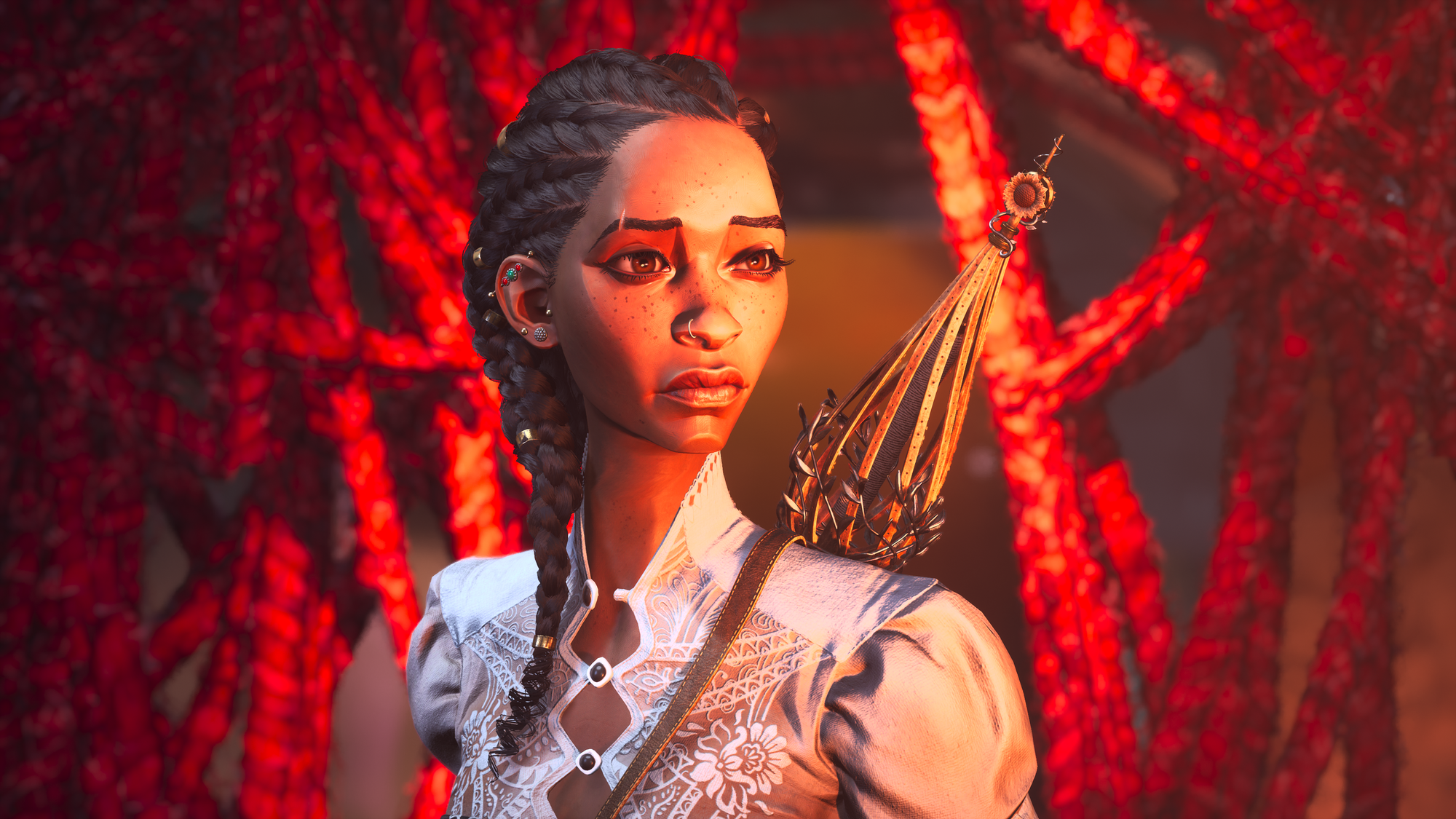
The game’s message about violence, kindness, and healing is intrinsic to these battles too: instead of defeating your foe in combat, you’ll often stun them enough to attack the “stigma wound,” or the heart of their pain. As Hazel progresses as a Weaver, the meaning of this act (or not acting) becomes a core part of the story, which, back to the film analogy, elevates the story to this Pixar-esque exploration of emotion, trauma, and growth.
South of Midnight is saying something, which makes it all the more painful that that message is hidden behind mandatory combat. Each character you run into—NPC or boss—has a simple, but rich story woven through their chapter. You’ll meet downtrodden people living through awful things; often, there is no happy resolution. Life isn’t that clean; we can’t defeat our depression with punches, nor can we wall-run from our problems. South of Midnight understands this and bakes the message into the boss battles and quieter moments you have with NPCs.
I hope that Compulsion gets another shot at South of Midnight. The world is so lovingly crafted and it’s one of those very rare games where you can feel its soul. Like all Microsoft studios, I’m half expecting to see Compulsion’s name in a headline in the umpteenth round of layoffs, but I think that’d be such a shame. It’s so rare to see a game with such heart that sticks the landing so well thematically, while stumbling mechanically. But, like the bayou itself, South of Midnight has its beauty and its pain.


